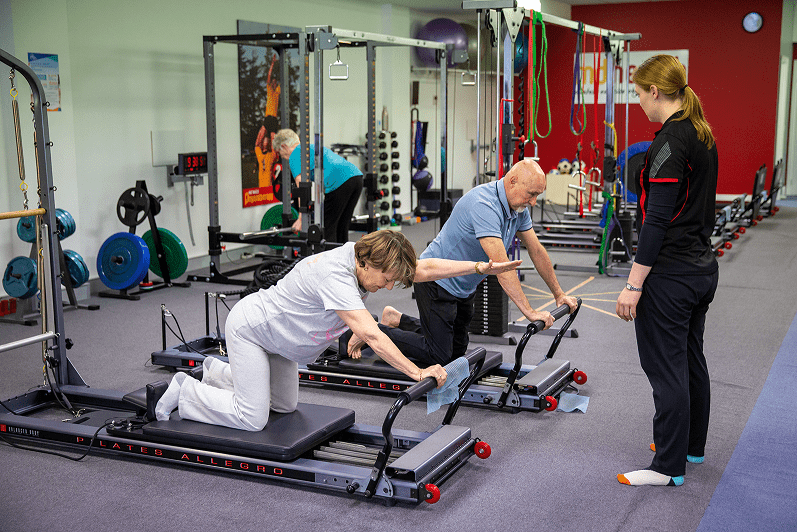Demystifying Pilates: What is the difference between Pilates and Clinical Pilates ?
Pilates, originally developed by Joseph Pilates, and following the principles of Centrology, focuses on improving movement, strength and control, however, does not take into an individual’s injuries, pathologies and specific physical needs. Clinical Pilates, using our staff’s physiotherapy and exercise physiology knowledge and training, is able to adjust, modify and specifically choose Pilates exercises that meet your individual needs, based on clinical assessment.
From a learning and strength training perspective, Pilates , in particular reformer based Pilates is a wonderful tool to improve core stability and strength. In the original design of Joseph Pilates’ equipment, these exercise machines were designed exactly the way your body and more importantly, your brain learns new tasks, exercises and movements. It is amazing that without modern neuroscience, Joseph Pilates was able to design equipment that involved
- Proprioception – Balance
- Task Oriented – Your brain learns tasks, not specific movements when it forms new patterns
- Resistance Based – You need to push a muscle a little bit beyond it’s comfort zone to encourage change and growth over time
all the elements that your body needs to learn new tasks and grow muscle in the best way. In general, reformer based Pilates provides these elements to a larger degree than Mat based Pilates.
Clinical Pilates adds that additional element of clinical knowledge to all the Pilates exercises. The specific choice of Pilates exercises that you do is the difference between a routine that works and one that doesn’t.
For example, in a typical situation that we see in our centre, a client comes to see us to work on their core stability to reduce their back pain. From our examination, it is clear that the client has a right sided L5/S1 disc bulge as their main injury and secondary pelvic (SIJ) instability, due to poor gluteal activation as a result of pain from the disc bulge. In addition, there is general hip and knee weakness which increases the load on the lower back and is a major contributing factor to why this injury was caused in the first place.
The specific choice of exercises to manage the disc bulge and pelvic instability, whilst working on the core stability, hip and knee strength will mean the difference between a program that gets the result of managing this client’s back pain and improving core stability in the long term or aggravating the condition.
In addition, Clinical Pilates also gives us the freedom to add addition treatments, such as McKenzie extension exercises, joint mobilisation and traction as part of this client’s Pilates program, which are based on physiotherapy training, rather than pure Pilates exercises
| Clinical Pilates | Pilates | |
| Improves Core Stability | Yes | Yes |
| Improves Muscle Tone and Strength | Yes | Yes |
| Individual Program based on Physiotherapy/Exercise Physiology Principles | Yes | No |
| Able to Incorporate Physiotherapy Treatment as part of program | Yes | No |
| Able to make specific changes Pilates program if injury flare up based on Physio/Ex Physio knowledge | Yes | No |
| Preferred Starting Equipment | Reformer | Mat |



